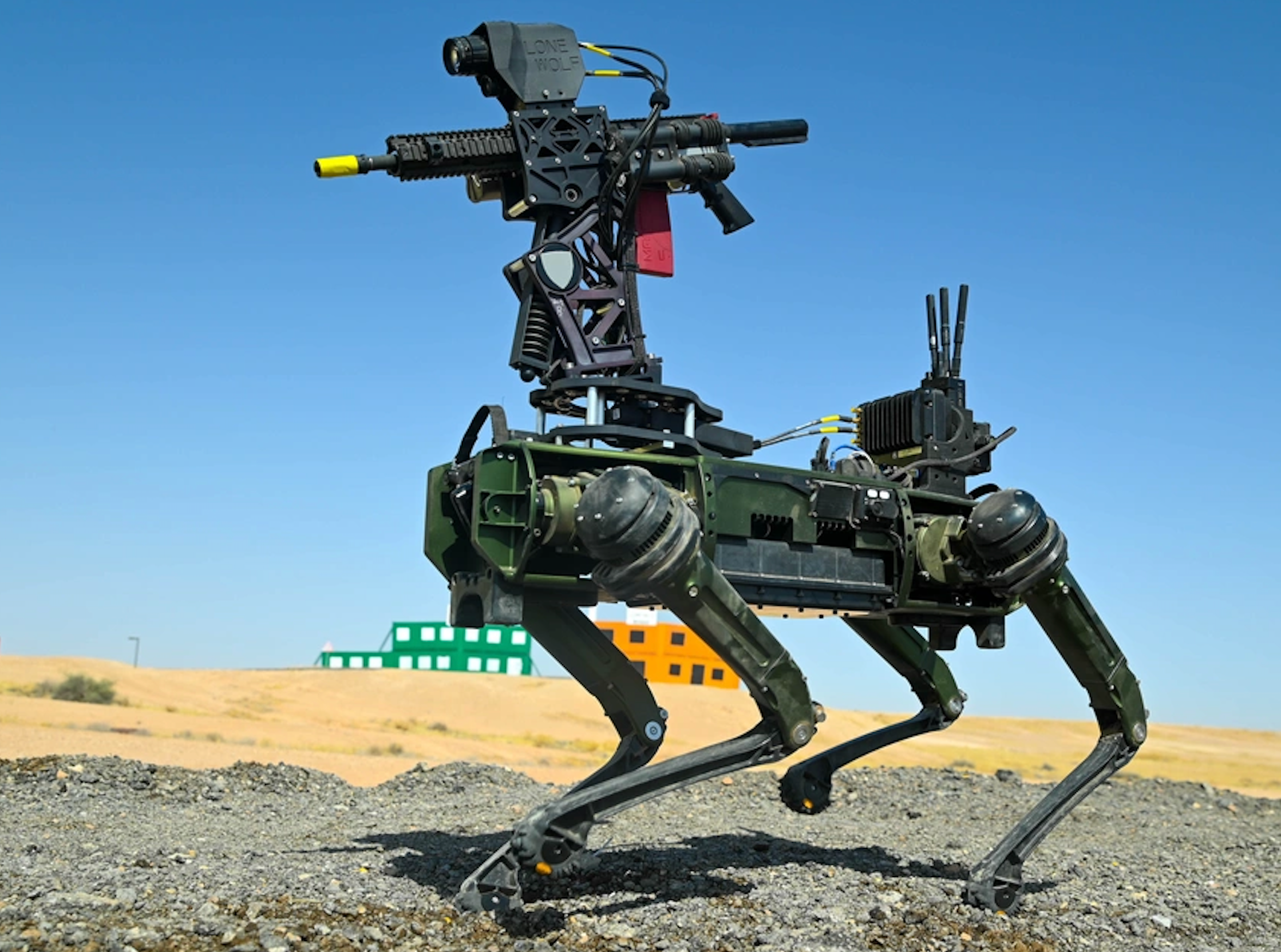
Your support helps us to tell the story
Our mission is to deliver unbiased, fact-based reporting that holds power to account and exposes the truth.
Whether $5 or $50, every contribution counts.
Support us to deliver journalism without an agenda.

Louise Thomas
Editor
The US Army is testing robot dogs mounted with AI-enabled rifles at a military facility in the Middle East amid rising tensions in the region, according to newly released images.
Photos shared by the Defense Visual Information Distribution Service (DVIDS) show one such four-legged robot going over “rehearsals” at the Red Sand Dunes area near Riyadh, Saudi Arabia, which has a joint military research facility.
The quadrupedal unmanned vehicle can be seen mounted with what appears to be an AR-15/M16-pattern rifle on a rotating turret and resembles the robot system the US Army tested at Fort Drum, New York in August.
The US Army describes the robot dog as a four-legged unmanned ground vehicle (UGVs) armed with an artificial intelligence-enabled rifle – contributing to innovative unmanned capabilities. DVIDS is an operation run by the US DoD to provide media on its activities across world.
It was one of several autonomous systems that the army tested along with 15 other “counter-drone platforms” at Red Sands last month, according to Military.com.

The US defence department has been incorporating robot dogs and other autonomous ground vehicles in its formations over the last few years.
American engineering firm Boston Dynamics was the first to pioneer the vision of robot dogs, launching its first four-legged prototype “BigDog” in 2005 in partnership with Nasa and the US Defense Advanced Research Projects Agency (DARPA).
The first robot-dog the company made for commercial use called “Spot” at about $75,000 each was marketed only for industrial and warehouse operations with initial research praising its ability to inspect and gather safety data at construction sites.
Boston Dynamics later said it would not support weaponisation of the technology, urging its peers to join the pledge.
But several other companies continue to make similar autonomous systems for military purposes. For instance, in 2020, the Air Force tested the four-legged robots first for perimeter defence tasks.
The technology was proposed for surveillance by US State Departments, including by the NYPD and LAPD, a decision that many condemned.
Two years later, the Department of Homeland Security (DHS) made plans to deploy robot dogs to patrol the country’s southern border with Mexico – a move that was widely criticised by American politicians and human rights groups.
Israel Defence Forces (IDF) has also experimented with the use of remote-controlled dogs in its invasion of Gaza.
Israeli newspaper Haaretz reported that the IDF deployed robot dogs fitted with aerial drones known as the “Rooster” in Gaza earlier this year. IDF reserves organisation Brothers in Arms had earlier said robot dogs would be used in Gaza to collect life-saving intelligence and “assist combat soldiers to operate optimally in the field”.
Now, the escalating situation in the Middle East with Iran’s launch of missiles at Israel seems to have garnered more interest to test robot systems.

Researchers have flagged multiple concerns posed by the use of robotic dogs for military purposes, including cost and ethical issues.
Following backlash from several groups, the Pentagon issued a directive last year that its use of AI capabilities in weapons systems would be consistent with the Department of Defence AI Ethical Principles.
The directive noted that the technology would be used only with appropriate care, and “under the law of war, applicable treaties, weapon system safety rules, and applicable rules of engagement.”
However, rights groups have slammed the directive as “an inadequate response”.







